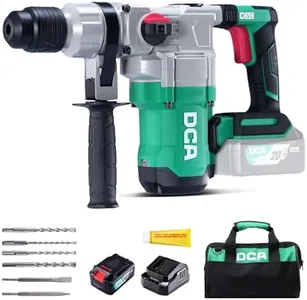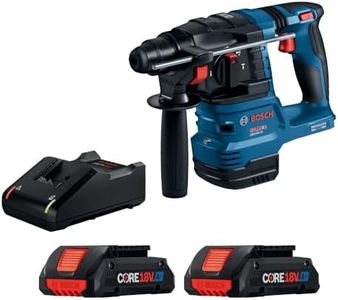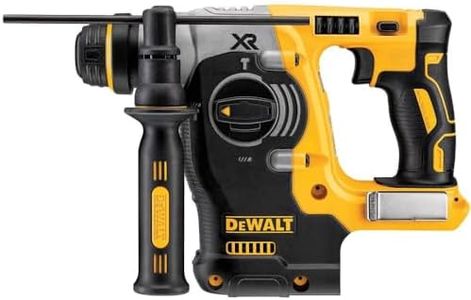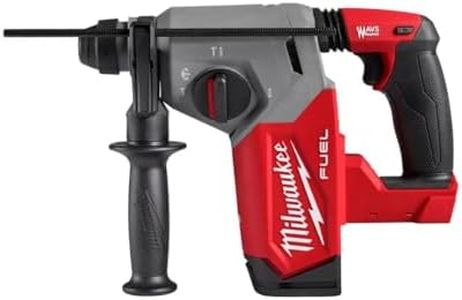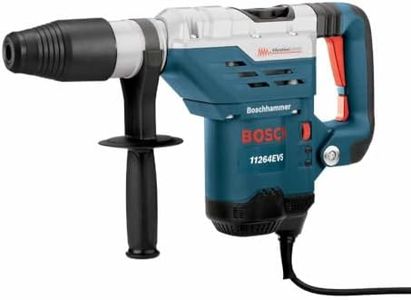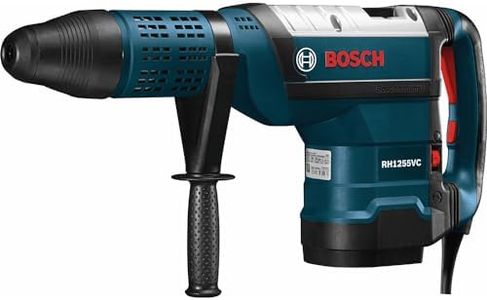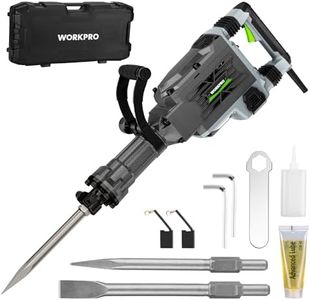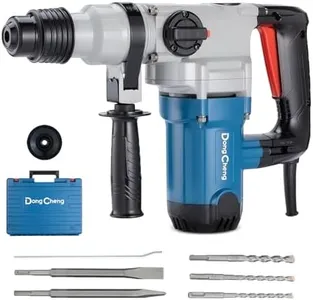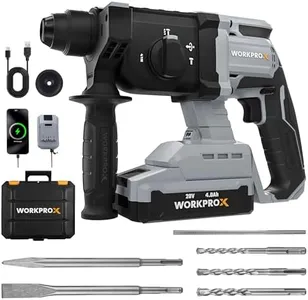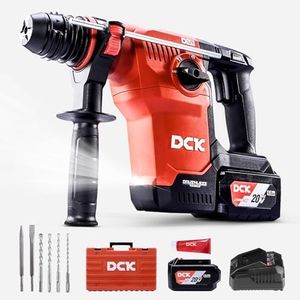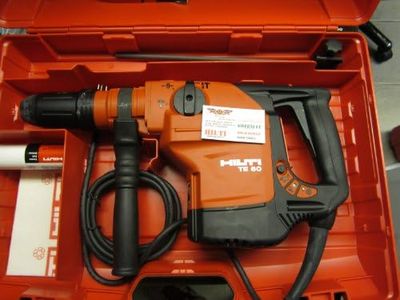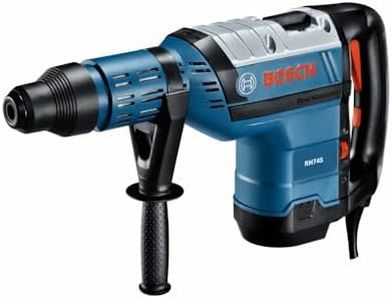10 Best Rotary Hammer Drills 2025 in the United States
Our technology thoroughly searches through the online shopping world, reviewing hundreds of sites. We then process and analyze this information, updating in real-time to bring you the latest top-rated products. This way, you always get the best and most current options available.

Our Top Picks
Winner
Bosch GBH18V-22K24 18V Brushless SDS-plus® Bulldog™ ¾ In. Rotary Hammer Kit with (2) CORE18V® 4 Ah Advanced Power Batteries
Most important from
111 reviews
The Bosch GBH18V-22K24 is a cordless rotary hammer drill designed for heavy-duty concrete work, delivering solid impact energy of 1.4 ft.-lbs., which helps it handle tough drilling tasks efficiently. It runs on two 18V 4Ah lithium-ion batteries, supported by a brushless motor that improves battery life and power delivery. With a maximum rotational speed of 1,050 RPM and up to 4,675 blows per minute, it balances speed and impact for effective drilling. Weighing about 6.4 pounds including batteries, it’s relatively lightweight for its power class, making it easier to control during extended use or overhead jobs. The SDS-plus chuck system is compatible with many standard bits, adding versatility.
Notably, it includes anti-vibration technology and kickback control, which enhance user comfort and safety by reducing strain and sudden jerks. The L-shaped design and variable-speed trigger provide better handling and precision, especially in tight or awkward spaces. While its 1.4 ft.-lbs. impact energy is adequate for many concrete tasks, some heavy professionals might find it less powerful compared to higher-impact models for the toughest jobs. Also, as a battery-powered tool, its run time depends on battery charge and may require spare batteries for continuous use.
This hammer drill suits DIY enthusiasts and contractors needing a reliable, portable option for moderate to heavy concrete drilling without the hassle of cords. It represents a solid choice for those who value cordless convenience, safety features, and manageable weight over maximum brute force.
Most important from
111 reviews
DEWALT 20V MAX SDS Rotary Hammer Drill, Cordless, 3 Application Modes, Bare Tool Only (DCH273B)
Most important from
3267 reviews
The DEWALT 20V MAX SDS Rotary Hammer Drill, model DCH273B, is designed for both professionals and DIY enthusiasts looking for a cordless solution for heavy-duty drilling tasks, particularly in concrete. With an impact energy of 2.1 Joules and a maximum power of 300 watts, it provides solid performance, making it effective for various applications like rod hanging and cable tray mounting. The lightweight design, at just 6.4 pounds, enhances portability, allowing users to work comfortably over extended periods.
One of its standout features is the SHOCKS ACTIVE VIBRATION CONTROL system, which significantly reduces the vibration felt in the handles, a great advantage for user comfort during prolonged use. Additionally, the brushless motor contributes to its efficiency and longer runtime, which means less frequent battery changes. The three application modes—Drill, Hammer Drill, and Chip—offer flexibility depending on the task at hand.
There are a few considerations to keep in mind. The drill is a bare tool, meaning it does not come with a battery or charger, which may be an extra cost for those who do not already own compatible DEWALT products. Also, while the 2800 RPM speed is impressive, it might not be as powerful as some corded options available in the market, which could be a drawback for extremely heavy-duty tasks. In conclusion, the DEWALT DCH273B is a reliable and versatile rotary hammer drill well-suited for both casual and more serious users in need of a portable, efficient tool for concrete drilling, but potential buyers should be aware of the additional costs associated with battery and charger purchases.
Most important from
3267 reviews
Milwaukee 2912-20 M18 Fuel 18V 1" Sds Plus Brushless Rotary Hammer
Most important from
456 reviews
The Milwaukee 2912-20 M18 Fuel 18V 1" SDS Plus Brushless Rotary Hammer is a powerful cordless tool designed for heavy-duty drilling tasks. It offers a maximum rotational speed of 1330 RPM and a power output of 800 watts, making it suitable for both professional and DIY users.
The tool includes AUTOSTOP Control, which enhances safety by sensing and stopping the drill during bind-ups, reducing the risk of injury and equipment damage. This feature, combined with its compatibility with the M18 system (over 200 solutions), makes it a versatile addition to any toolkit.
The drilling capacities are 0.5 inches in metal and 1.13 inches in wood, suitable for most common drilling needs. However, the drill weighs 7.8 pounds, which may be a bit heavy for extended use or for users who require a lightweight tool. Additionally, while it is battery-powered, the batteries are not included, which means an extra expense if you don't already own M18 batteries.
Most important from
456 reviews
Buying Guide for the Best Rotary Hammer Drills
Choosing the right rotary hammer drill can make a significant difference in the efficiency and ease of your drilling tasks. Rotary hammer drills are powerful tools designed for heavy-duty drilling and chiseling in hard materials like concrete, brick, and stone. To find the best fit for your needs, it's important to understand the key specifications and how they relate to your specific requirements.FAQ
Most Popular Categories Right Now
